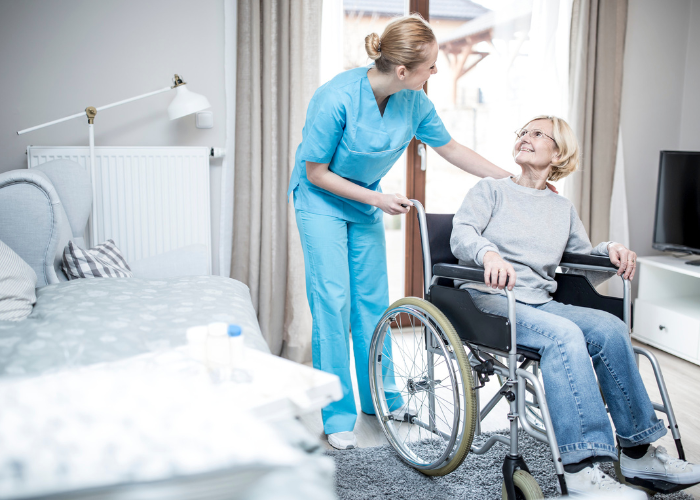Our Top Tips for Preventing Care Equipment Breakdowns and Downtime In Care Homes
Here at Hcsuk Servicing we understand that running a care home requires constant attention and care, and one of the biggest challenges is ensuring that all essential patient care equipment is operating efficiently and running smoothly without experiencing any breakdowns or downtime.
Just one single malfunctioning piece of equipment can cause disruptions in resident care and an unwarranted increase in staff workload.
How Do You Maintain Your Care Equipment?
Why not download our FREE Industry Best Practice Servicing Guide which will assist you with the ongoing servicing and maintenance of your care equipment, outline your responsibilities as a care provider and to highlight exactly why it’s important to adhere to government regulations and industry standards.
To prevent equipment breakdowns and downtime, here are some tips care home staff can follow.
Regularly Clean And Maintain Equipment
One of the simplest but most effective ways to prevent equipment breakdowns is to keep it clean and well-maintained.
Regularly clean equipment after use, lubricate moving parts, and check for any visible wear and tear.
Keeping equipment in good condition can prolong its life considerably, and prevent malfunctions.
Train Staff On Proper Usage
Improper use of equipment can lead to premature wear and tear, which can cause breakdowns.
Staff members should be trained on how to use each piece of equipment correctly and given specific guidelines on usage to avoid damage.
Two areas where this especially important for the smooth running of the home and equipment are;
1. Hoist battery charging – for the home to run as efficiently as possible, it’s imperative that when training staff or having update meetings, to drive home the ethos that when any equipment has been used that has detachable battery pack or is charged with a lead from the 240v mains system, to ALWAYS put it back on charge whether it’s needed straight away or not.
The IDEAL time for charging is overnight, so it is wholly advised to direct the staff on shift to make a point of putting all hoisting equipment on charge once residents are safely tucked away for the night.
2. Care of patient lifting slings– when slings aren’t in use or being laundered, a good practice to help prevent premature aging or damage to the lifting tapes or materials is if there are any Velcro fastenings on the sling, to ensure that both the hook and loop surfaces are clear of any lint or debris, and that they are correctly mated together prior to storage or laundering.
This will greatly help to alleviate any potential damage to the lifting tapes especially as the ‘hook’ side of the Velcro can sometimes have a detrimental effect on the cords of certain types of lift tapes. This could result in slings failing their 6-monthly LOLER inspections and causing potentially unnecessary expense and potential downtime due to a sling being unexpectedly taken out of action and causing a possible delay in replacement.
Regular refresher training sessions can ensure staff are following best practices and can catch up on any updates or changes.
Conduct Regular Inspections
Regular inspections of all equipment are essential for identifying any issues before they become more serious.
Conducting a thorough inspection before and after each shift can identify any worn-out components, loose screws or bolts, or other issues that need addressing.
Care homes can also have their own maintenance technicians conduct regular inspections and maintenance, to ensure that all equipment is operating correctly.
Use Equipment As Intended
Each piece of equipment in a care home is designed for a specific purpose.
Using equipment for anything other than its intended purpose can lead to breakdowns and safety issues.
It's important to follow the manufacturer's instructions and guidelines for usage, and only use the equipment as intended.
Keep Spare Parts On Hand
Care homes should ideally keep spare parts on hand for equipment that is frequently used or essential for resident care.
This includes items like batteries, cables, handsets and other replacement parts.
Having these parts on hand can reduce downtime and ensure quick repairs if an equipment malfunction occurs.
Conduct Regular Staff Feedback And Evaluations
Care homes should encourage staff members to report any issues they notice with equipment. Feedback and evaluations can provide valuable insight into how equipment is being used and how it can be better maintained or replaced.
Care home managers and staff can take several steps to prevent equipment breakdowns and down time:
-
With regular cleaning, maintenance, inspections, training, and use of equipment as intended, the risk of equipment breakdowns can be significantly reduced.
-
Having spare parts on hand and encouraging staff feedback can also help address issues quickly and efficiently.
By taking these simple preventative measures, care homes can help to ensure residents safety and provide quality care without too many unwanted interruptions.
How Do You Maintain Your Care Equipment?
Why not download our FREE Industry Best Practice Servicing Guide which will assist you with the ongoing servicing and maintenance of your care equipment, outline your responsibilities as a care provider and to highlight exactly why it’s important to adhere to government regulations and industry standards.
Image source: Canva





